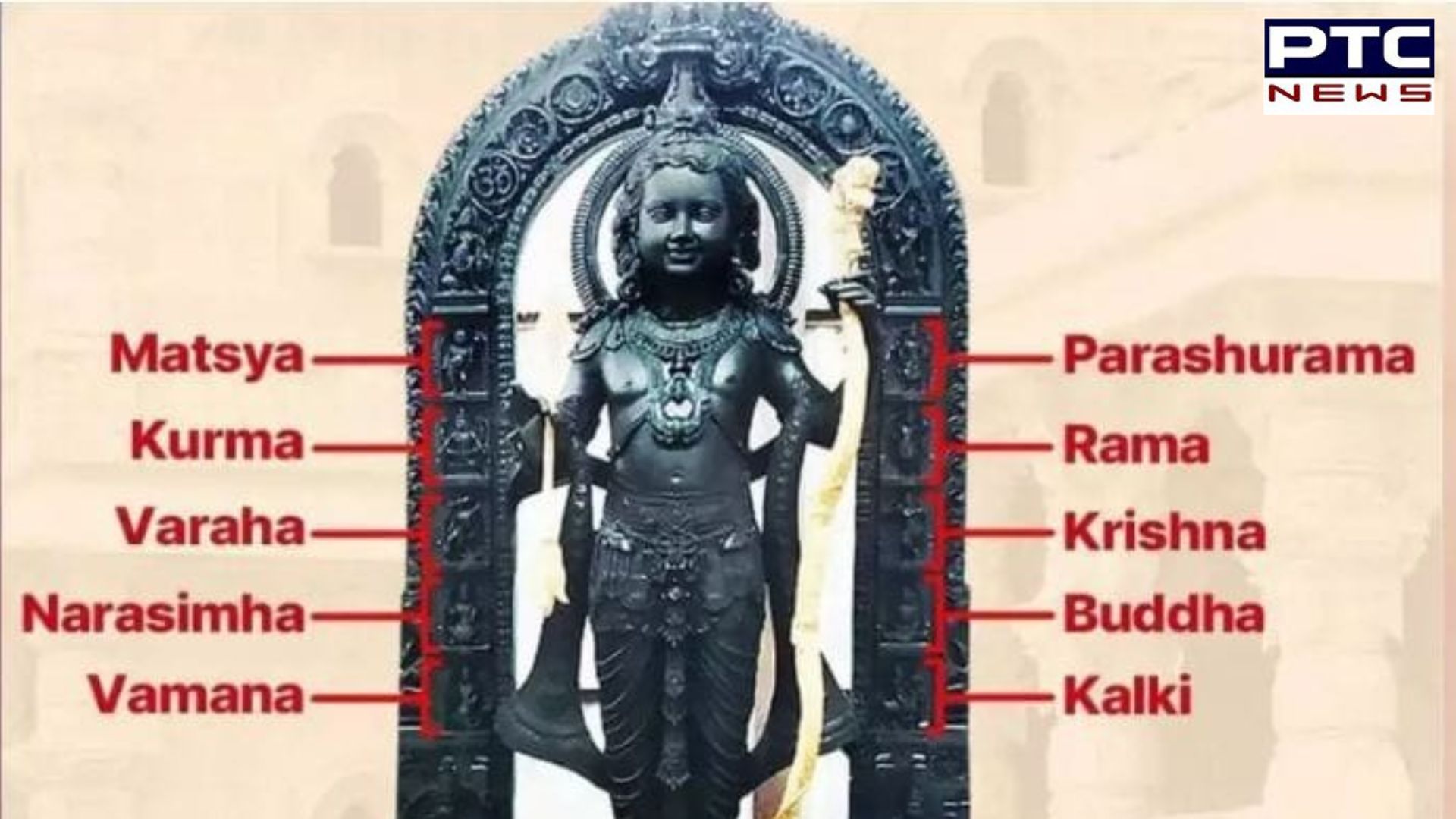Ram Lalla idol depicts 10 avatars of Lord Vishnu, know significance

Ram Lalla depicts 10 avatars of Lord Vishnu: Ahead of the much-awaited, iconic and significant occasion of Ram Mandir Inauguration, the much-anticipated revelation of Lord Ram Lalla's face took place, offering devotees a glimpse of the divine idol. The images, originating from Arun Yogiraj's workshop, showcase the five-year-old Lord Ram standing with a golden bow and arrow in hand.
If we closely examine the Ram Lalla idol, we can observe all 10 avatars of Lord Vishnu on both sides of Ram Lalla idol. One side features Matsya, Kurma, Varaha, Narasimha and Vamana, while the other side features Parashurama, Rama, Krishna, Buddha and Kalki. Notably, Lord Hanuman, the devoted disciple of Lord Ram, is positioned beside the right foot of the Ram Lalla idol. Additionally and Lord Garuda, the mount of Lord Vishnu (vahana), is situated in proximity to the left foot of the Ram idol.
Also Read: 5 Best Hotels to Stay in Ayodhya in 2024
/ptc-news/media/media_files/XZSbevyPtmcGHH8Ayszh.jpg)
These symbols hold profound significance in the context of Lord Vishnu and Lord Ram and represents Hinduism and Sanatan Dharma. Each symbol represents the divine blessings and positive cosmic energies that they bring to the world. The right hand of the idol is depicted in a gesture of blessing (aashirwaad) while holding an arrow, and the left hand holds a bow (dhanush).
Also Read: Jai Shri Ram | First glimpses of Ram Lalla idol from inside Ayodhya temple revealed
The Ram Lalla idol has been crafted by Mysuru-based sculptor Arun Yogiraj, which weighs approximately 150-200 kg. The idol portrays Lord Ram as a five-year-old child standing on a lotus also crafted from the same stone. The statue, with dimensions measuring 4.24 feet in height and three feet in width, exudes a captivating divine presence of Lord Ram.
Significance of 10 avatars of Lord Vishnu
The ten avatars of Lord Vishnu are collectively known as the Dashavatara
Matsya (The Fish): Represents preservation and the rescue of knowledge during the cosmic flood.
Kurma (The Tortoise): Symbolizes support and stability during the churning of the cosmic ocean.
Varaha (The Boar): Illustrates the rescue of the Earth and restoration of dharma.
Narasimha (The Man-Lion): Signifies the simultaneous existence of man and animal, and the triumph of good over evil.
Vamana (The Dwarf): Represents humility and the control of ego, as well as the restoration of balance.
Parashurama (The Warrior with an Axe): Embodies the destruction of tyranny and the restoration of dharma through warfare.
/ptc-news/media/media_files/ZnoCKPIaDJE2MbR02LMM.jpg)
Rama (The Prince of Ayodhya): Exemplifies righteousness, duty, and adherence to dharma, as depicted in the Ramayana.
Krishna (The Divine Cowherd): Represents divine love, compassion, and the teachings of the Bhagavad Gita.
Buddha (The Enlightened One): Some traditions include Lord Buddha as an avatar, emphasizing non-violence, compassion, and enlightenment.
Kalki (The Future Warrior): Anticipated to appear in the future, Kalki symbolizes the end of the current age, the destruction of evil forces, and the establishment of righteousness.
Also Read: Amitabh Bachchan acquires land in Ayodhya for this much crores, check price
